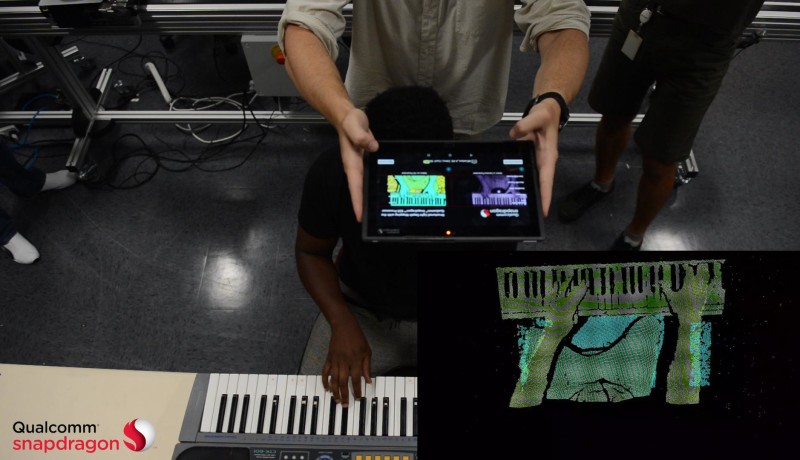High resolution depth sensing for Android cameras
August 16, 2017
on
on

Qualcomm announced an expansion to their Spectra™ Module Program, capable of improved biometric authentication and high-resolution depth sensing. The new technology was designed to meet growing demands of photo and video for a broad range of mobile devices and head mounted displays (HMD). The new module program is built on the technology behind Qualcomm’s Spectra embedded image signal processors (ISP) family. Qualcomm say their Spectra product “paves the way for future image quality and computer vision innovations in upcoming Qualcomm® SnapdragonTM Mobile Platforms.”

Qualcomm showed footage captured by the new Spectra ISP of someone playing the piano. The perspective of the image shifted easily from an overhead view to a sideways look at hands hitting the keys; eventually the camera could even show the hands separating from the rest of the body. That illustrates how this active depth sensing technology could be used to help with hand tracking, eliminating the need for physical controllers in AR and VR.
Together, the new ISPs and camera modules are engineered to support superior image quality and new computer vision use cases that utilize deep learning techniques and bokeh quality image experiences. The next-generation ISPs feature a new camera architecture designed for advancements in computer vision, image quality and power efficiency for the next Snapdragon Mobile and VR Platforms. The camera module program additions consist of a trio of camera modules, including an iris authentication module, a passive depth sensing module and an active depth sensing module.
Image: Qualcomm

Qualcomm showed footage captured by the new Spectra ISP of someone playing the piano. The perspective of the image shifted easily from an overhead view to a sideways look at hands hitting the keys; eventually the camera could even show the hands separating from the rest of the body. That illustrates how this active depth sensing technology could be used to help with hand tracking, eliminating the need for physical controllers in AR and VR.
Together, the new ISPs and camera modules are engineered to support superior image quality and new computer vision use cases that utilize deep learning techniques and bokeh quality image experiences. The next-generation ISPs feature a new camera architecture designed for advancements in computer vision, image quality and power efficiency for the next Snapdragon Mobile and VR Platforms. The camera module program additions consist of a trio of camera modules, including an iris authentication module, a passive depth sensing module and an active depth sensing module.
Image: Qualcomm
Read full article
Hide full article


Discussion (0 comments)